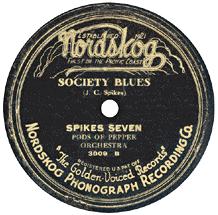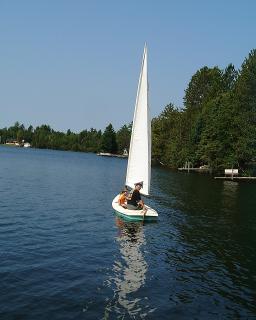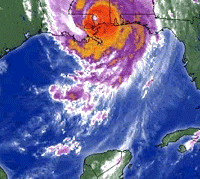
Eli Wirtanen's Savusauna
The Lake Superior hinterland did not lack a cultural tradition steeped in heat when Europeans first explored the region in the sixteenth century. The Ojibwe used sweat lodges to purify and cleanse, just as the Lakota and Cree had before them. But those traditions were removed to enclaves like Grand Portage, Fond du Lac, and Bois Forte by the time the fur trade had dwindled and the region became lightly settled by Caucasians.
That most northeasterly of the new European immigrants, those who called themselves Suomi, brought a similar tradition with them. Shanty towns near the copper and iron mines, and logging camps in the vast pinelands began to sprout a distinctive sort of outbuilding, built to embrace a raging hearth and furnished to survive a good soaking. The sauna was probably as strange and impractical to a Yankee superintendant or Scots foreman as the sweat lodge had been to Jesuit missionaries. And for that difference, Finns formed rural agricultural communities that have survived into the 21st century. Once a Finn laborer had saved enough to choose landownership, he almost always built a sauna on his property. Most often it was the first building staked and raised.
Like most Finnish immigrants who homesteaded at the dawn of the twentieth century, Eli Wirtanen got his foothold in America by serving in the front lines of resource extraction, cutting pine from the Minnesota winter woods and milling it in the summers. He had landed at Port Arthur in Ontario, where a brother lived among a burgeoning Finnish community, but Eli migrated in search of work to central St. Louis County in Minnesota. He struck up a friendship with his boss, and as a worker he took often to the tavern, that ready sinkhole of wages earned. But the boss's wife tamed her mate, committing her husband to homestead a forty acre woodlot at Markham on the Vermilion Trail in 1904, and Eli anted up as a bachelor neighbor.
The soft midlands of Minnesota's Arrowhead region bear small resemblance to its flinty edges and spine. The rocky north shore of Lake Superior forms the sharper edge, but bedrock also defines the serpentine, watery northern border with Ontario. The ridgeline of the arrowhead is the Mesabi range, drifts of iron ore and rusty shafts of hematite. But in the wide expanse between the Mesabi and the Superior highlands lies a softer country, where terrestrial bones are buried deep beneath gravel. It is a land rich in the oddities of glacial topography: drumlins, eskers, and moraine. This is the watershed of the St. Louis River, and Markham sits near the headwaters of a tributary called the Whiteface. Atop this plain of glacial outwash and ag

ricultural improvidence, the immigrant Eli staked his claim.
He built a sauna near the road that marked the northern boundary of his forty acres. Doubtless his enterprise required thrift, and it may have been for that reason that he built a savusauna, a structure that differs little from many one would have seen in the forests of Eli's homeland centuries before. The building features a small vestibule, which opens into a dark room. A savusauna encloses an open fire or some manner of primitive stove piled with stones; some are vented through gaps in the logs, but Eli's is tightly fitted, exhausting through a hole near the peak of the back wall and intaking through a chest-height box a side wall. The structure is simple in its beauty, and decades of functional tweaking are apparent: a culvert section became the hearth, a weathered and reddened metal roof crowns the hand-squared, dovetailed logs. This sauna has seen one hundred winters and warmed thousands of evenings.
After a long week's work in the forest or a day spent teaming his horses for 40 cents an hour, Eli would close the week in his savusauna. The room would fill with smoke while the rocks heated, and Eli would stoke the fire with breath held and eyes tight. Only after the fire had died and the smoke cleared would his bath begin, and he would pour water on the kiuas to produce the telltale flash of sauna steam, löyly (say "loo-loo" and you'd be understood in Helsinki, because that's about as close as an American larynx can get).
Finns' affinity for sauna dates to a distant chilly past. While such baths once flourished throughout northern and central Europe, plague and vice had pushed the tradition to the edge of civilization, where people still hacked a thoroughly rural and meager existence from a begrudging landscape, in the Finnish highlands. In the nineteenth century, Finnish nationalism stirred after centuries of provincial status beneath Sweden or Russia. Elias Lönnrot, a linguist trained in the university town of Turku, traveled the Russo-Finnish frontier gathering the stories he would collect into the Kalevala. This epic verse, he hoped, would gather strength like a boreal Bhagavad Gita, galvanizing the self-awareness of a nation. The verses contain many references to sauna, and many references to desperate struggles against frigid northern evils. Embraced by all who read the Finnish language, sauna again flourished in the coastal regions as a crucial Finnish element.
There is no mystery behind the Finns' importation of this tradition to the new land so many of them chose, the shores and uplands of the Lake Superior basin. The average daily temperature in Markham bottoms out near zero in January, and frost is no stranger to any month. (In contrast, the average January temperature in Eli's native parish of Karstula in Finland is a balmy 16 degrees). In this new world, sauna gained a ritualized Saturday evening regularity in response to the American work week.
Sisu, a Finnish amalgam of spunk, chutzpah, and Sisyphean grit--"even through a stone wall" is one characterization--must have helped Eli Wirtanen throughout his bachelor life. The sauna was the first building of many, and would have been his first shelter. He carved a wide meadow out of the norway pines, white spruce, and tamarack, and built a sturdy modest log house that remains wafer tight to this day. He raised a few animals, kept a horse team for hire, and worked winters in the woods well into his seventies. Several barns ring the meadow, and the forest still stands respecfully distant more than a half century after Eli's death at 87 in 1957.
His legacy is now a historical treasure, thanks to the efforts of such locals as Gerry Kangas and the generous support of many, including Arnold Ranta and Bill Aho, successful Markham expatriates who have matched fundraising efforts. The site, held for years by the St. Louis County Historical Society, was acquired in 2001 by the Friends of the
Wirtanen Pioneer Farm. These secluded acres are valuable for their ability to portray to the visitor a simple farmstead economy, to view a plot that was developed not under the strictures of a contractor's calendar and a bulldozer's blade, but rather by the annual fortunes and ambitions of its industrious steward and his reckoning with the land and seasons, all without electricity or internal combustion. But the Eli Wirtanen Farm is precious most of all because of its homestead savusauna, a rare relic. Such scorched chambers are understandably prone to conflagration every generation or so, and have all but disappeared from the Arrowhead woods.
For most who grow up in Minnesota's Arrowhead, Finn or fowl, the sauna is as common as a pickup truck. You may not own one yourself; you may never even feel compelled to borrow your neighbor's. But you are accustomed to its proximity and know that severe warmth sometimes comes in handy. Much to the benefit of all, the community of Markham continues to fan the cultural embers.
(Note: This entry is a draft of the first chapter of my manuscript on the sauna tradition of northeastern Minnesota. My collaborator is the photographer Aaron Hautala, who gets credit for the featured image.)
 This week's PBS broadcast of Martin Scorcese's "No Direction Home" consistently entertained and provided me with a few revelations. I was born late in 1963, just before Dylan released his third album, and I have never really grasped his phenomenal rise to icon, only hearing it through his music. This film nailed his charisma and eloquence. And the contemporary interviews surprised me because he still exudes certain Minnesotan sensibilities, for better or worse.
This week's PBS broadcast of Martin Scorcese's "No Direction Home" consistently entertained and provided me with a few revelations. I was born late in 1963, just before Dylan released his third album, and I have never really grasped his phenomenal rise to icon, only hearing it through his music. This film nailed his charisma and eloquence. And the contemporary interviews surprised me because he still exudes certain Minnesotan sensibilities, for better or worse.











